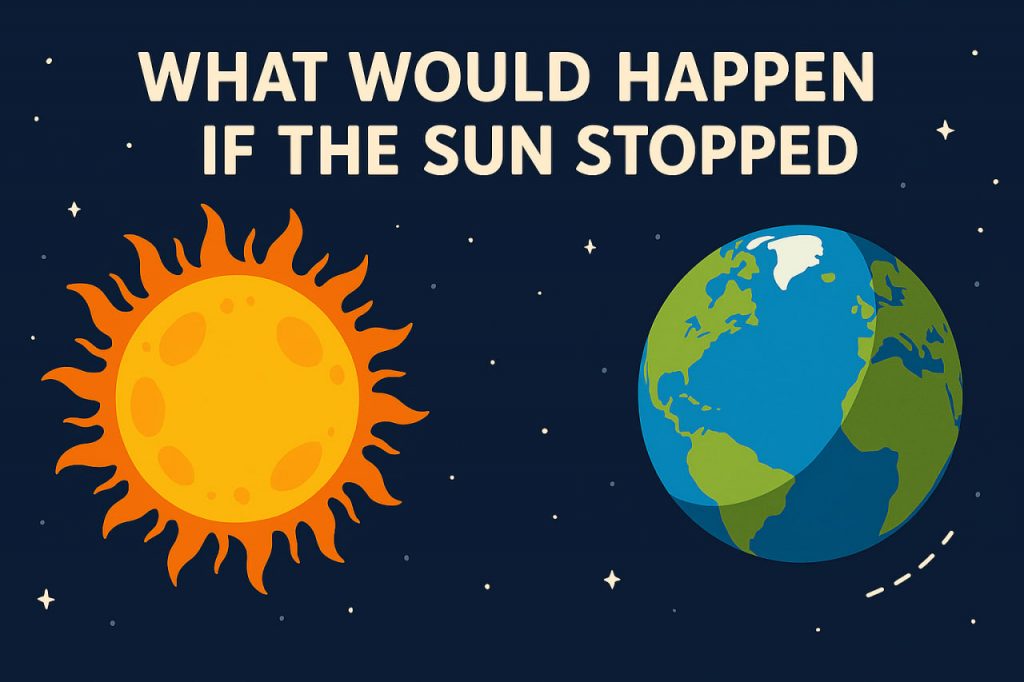The Sun is the engine of our Solar System, providing heat, light, and gravity that hold everything together. If the Sun were to suddenly stop—whether it stopped producing energy or ceased its gravitational pull—the consequences would be immediate and catastrophic for Earth and all life on it. While such a scenario is purely hypothetical, it helps us understand just how much we depend on our star.
If the Sun Stopped Shining
The Sun generates light and heat through nuclear fusion, a process that converts hydrogen into helium in its core. If this process stopped, the Sun’s brightness would eventually fade—but not instantly. Because light from the Sun takes about 8 minutes and 20 seconds to reach Earth, we would still see sunlight for that brief time after it stopped shining.
After that:
- Darkness would fall everywhere on Earth, even at noon.
- The Moon would disappear from view, since it reflects sunlight.
- Photosynthesis would cease immediately, affecting plants, plankton, and the food chain.
- Temperatures would begin to fall rapidly.
Within a week, the average surface temperature could drop to around -17°C (1°F), and within a year, it might reach -73°C (-100°F). Only some deep-sea life near hydrothermal vents would remain unaffected in the short term.
If the Sun’s Gravity Disappeared
The Sun’s mass creates a powerful gravitational force that keeps the planets in orbit. If the Sun’s gravity suddenly vanished (which violates the laws of physics), the Earth would stop orbiting and move in a straight line into space, at a speed of about 30 kilometers per second.
There would be no more day or night cycles, and over time, Earth would drift into deep space, becoming a frozen, lifeless world.
Long-Term Effects Without the Sun
Without the Sun:
- Earth’s atmosphere would eventually freeze and collapse.
- Oceans would begin to freeze over, starting at the surface.
- Only organisms that live deep underground or near geothermal vents could survive.
- Human civilization would be impossible on the surface without artificial heat and light.
Even if we had advanced technology to generate warmth and power, growing food without sunlight would be nearly impossible over the long term.
Could We Survive?
In theory, humans could build underground shelters powered by nuclear energy or geothermal heat, but life would become extremely difficult. Massive, coordinated efforts would be needed to maintain energy, oxygen, and food production.
Space stations or colonies around other stars could be another long-term hope—but for now, they remain in the realm of science fiction.
Glossary
- Nuclear fusion – The process by which stars generate energy by fusing hydrogen atoms.
- Photosynthesis – The process by which plants convert sunlight into energy.
- Gravitational force – The force that pulls objects toward each other, like Earth to the Sun.
- Hydrothermal vents – Openings on the seafloor where hot, mineral-rich water escapes, supporting deep-sea life.
- Geothermal – Heat that comes from inside the Earth.


